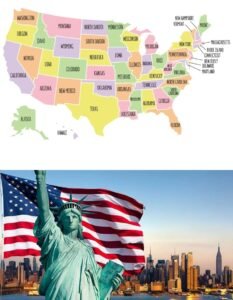I am over 72 years old. What can I do about avoiding the required minimum distribution tax (RMD)? I have a steady stream of other income.
Bernie
Deferred tax accounts, like 401(k)s and traditional Individual Retirement Accounts (IRAs), are potentially great ways to save for retirement. But they do come with strings attached.
By deferring taxes in these accounts, you form a partnership with the IRS. This is like taking out a mortgage from a bank to buy a house – except the IRS won’t stick to what the “interest rate” will be and patience suddenly runs out when you’re 72.
Under current tax law, 72 is when Required Minimum Distributions (RMDs) Begins. This means that account holders must begin distributing and paying taxes on their account balance.
As a result, the issue of tax avoidance on RMDs is common. Read on for strategies you can take to mitigate the fallout from the RMD tax.
a financial consultant It may help you understand how to manage the tax ramifications of your risk management authorities.
Take Rhythmic Movement Disorders Correctly
No matter your age, there are proactive steps you can take to prepare for an RMD tax.
The first step is to make sure you have a plan to distribute the required amount each year. It is worth stressing this point because penalties for losing RMD are up to 50% of the amount not withdrawn.
Before you worry about avoiding the sting of income tax, it’s essential to make sure you don’t make matters worse by incurring penalties.
Determine the withdrawal amount in RMDs
The two most important questions to be answered each year for RMDs are:
-
What accounts require an RMD?
-
How much is required from each account?
People are rarely surprised by the second question. But the first question is often neglected. Tax-deferred accounts are individual accounts, and one spouse’s RMDs cannot be covered by taking the distribution from the other spouse’s account.
Anyone with multiple tax-deferred accounts should be confident about the source of the distributions.
To complicate matters, if an individual has multiple IRAs, they can calculate the total RMD across all accounts and then take that distribution from one account to meet the requirements for the year. But if that same person has multiple 401(k) accounts, the money must be distributed separately to each account. There is no assembly.
If you only have one IRA 401(k)You can focus on the amount to be distributed. But it might be worth asking more questions before acting if there are multiple accounts involved.
The amount to be distributed is based on the IRS’ life expectancy and is calculated using the December 31 balance for accounts subject to RMDs.
Once that date has passed, the amount distributed is set, and the focus shifts to minimizing the tax due on the withdrawal.
Consider qualifying charitable distributions
The most effective way to lower that tax is by creating a tax Qualified Charity Distribution, also known as QCD. This provision of the tax code allows account holders to distribute money directly from their IRAs to a qualifying charity, removing the distribution from taxable income.
Distributions must flow directly to the charity. If the money reaches the taxpayer’s bank account first, the distribution will be fully taxable and the potential benefit will be lost.
The advantage of using this strategy is that it also removes the distribution from the taxpayer’s adjusted gross income (AGI), which is a key number in determining how much Medicare premiums cost the taxpayer.
You are over 72, so the following part will not apply. But for readers who haven’t reached this age, it’s important to note an additional benefit for CHD. These distributions can be taken starting at age 70 1/2 and will reduce the overall balance used to calculate RMDs. As a result, they will reduce the amount of RMDs in future years and related taxes.
If you are ready to match up with local advisors who can help you achieve your financial goals, then let’s start.
An account for your extra income stream
For QCDs to become a viable option, the taxpayer needs other sources of income or cash flow to support his or her lifestyle. If a QCD is not created or only covers a portion of the RMD (the QCD does not have to be the same amount as the RMD), then the other option for reducing the taxes owed is to reduce the taxable income during the year.
The American tax system is progressive, which means that the higher your taxable income, the more taxes you pay on every dollar of income.
Retirement opportunities to reduce taxable income may be limited but are worth considering. Specifically, capital gains and other discretionary types of income may provide opportunities to accelerate or delay income in higher tax years to reduce the amount that will be due from the RMD.
While you’re over the age limit of 72, younger people may benefit from strategically converting traditional IRA funds into a Roth before age 72. This can significantly reduce the amount of taxes paid once RMDs start.
What’s next
Regardless of whether the tax reduction strategies discussed here are workable or attractive to you, it is imperative that you have a plan in place to meet your RMD needs once you turn 72 to avoid penalties. Consider tax-savvy moves like making qualified charitable distributions, known as QCDs.
Tips on saving for retirement
-
If you have questions about required minimum distributions, consider working with a financial advisor. Find a qualified financial advisor It doesn’t have to be difficult. Free SmartAsset tool It matches you with up to three financial advisors serving your area, and you can interview your own advisors at no cost to determine which one is right for you. If you are ready to find a counselor who can help you achieve your financial goals, let’s start.
-
If you’re planning to retire on your own, it’s helpful to be in the know. SmartAsset has you covered with tons of free online resources to help. For example, check out Free retirement calculator And start today.
Stephen Jarvis, CPA is a financial planning columnist for SmartAsset and answers readers’ questions about personal finance and tax topics. Do you have a question you would like answered? e-mail AskAnAdvisor@smartasset.com Your question may be answered in a future column.Please note that Stephen is not a participant in the SmartAdvisor Match platform. Taxpayer resources from the author can be found at retirementtaxpodcast.com. Financial advisor resources from the author are available at retirementtaxservices.com.
Image credit: © iStock.com/shironosov, © iStock.com/whyframestudio
the post Ask a Consultant: I’m Over 72. How Do I Avoid the RMD Tax Sting? Debuted SmartAsset Blog.







